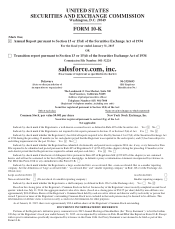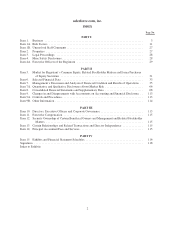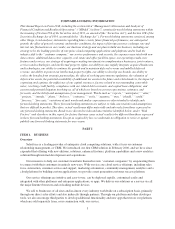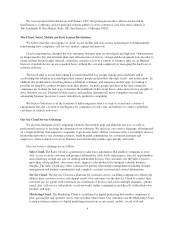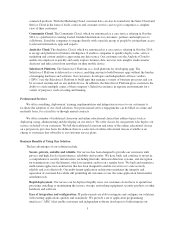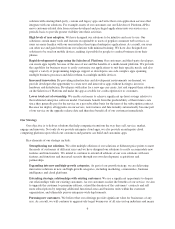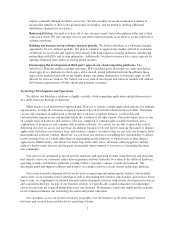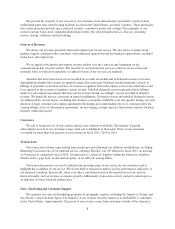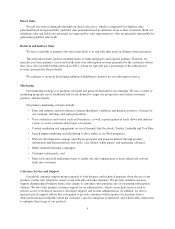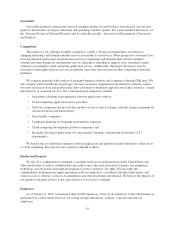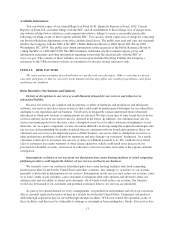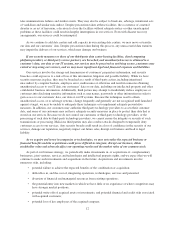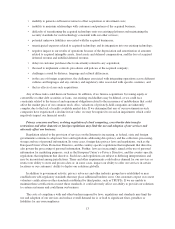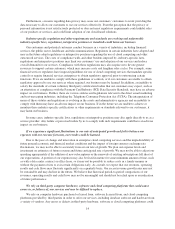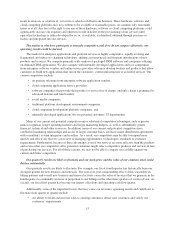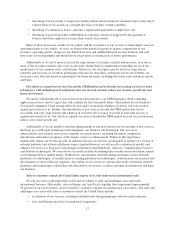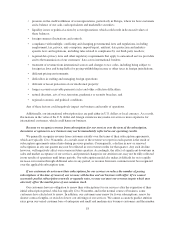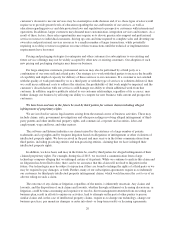Salesforce.com 2015 Annual Report Download - page 16
Download and view the complete annual report
Please find page 16 of the 2015 Salesforce.com annual report below. You can navigate through the pages in the report by either clicking on the pages listed below, or by using the keyword search tool below to find specific information within the annual report.Seasonality
Our fourth quarter has historically been our strongest quarter for new business and renewals, and our first
quarter is historically our largest collections and operating cash flow quarter. For a more detailed discussion, see
the “Seasonal Nature of Deferred Revenue and Accounts Receivable” discussion in Management’s Discussion
and Analysis.
Competition
The market for our offerings is highly competitive, rapidly evolving and fragmented, and subject to
changing technology and frequent introductions of new products and services. Many prospective customers have
invested substantial personnel and financial resources to implement and integrate their current enterprise
software into their businesses and therefore may be reluctant or unwilling to migrate away from their current
solution to an enterprise cloud computing application service. Additionally, third-party developers may be
reluctant to build application services on our platform since they have invested in other competing technology
platforms.
We compete primarily with vendors of packaged business software and companies offering CRM apps. We
also compete with internally developed apps. We may encounter competition from enterprise software vendors
who may develop toolsets and products that allow customers to build new apps that run on the customers’ current
infrastructure or as hosted services. Our current principal competitors include:
• On premise offerings from enterprise software application vendors;
• Cloud computing application service providers;
• Software companies that provide their product or service free of charge, and only charge a premium for
advanced features and functionality;
• Social media companies;
• Traditional platform development environment companies,
• Cloud computing development platform companies; and
• Internally developed applications (by our potential customers’ information technology (“IT”)
departments).
We believe that as traditional enterprise software application and platform vendors shift more of their focus
to cloud computing, they may become a greater competitive threat.
Intellectual Property
We rely on a combination of trademark, copyright, trade secret and patent laws in the United States and
other jurisdictions as well as confidentiality procedures and contractual provisions to protect our proprietary
technology and our brands and maintain programs to protect and grow our rights. We also enter into
confidentiality and proprietary rights agreements with our employees, consultants and other third parties and
control access to software, services, documentation and other proprietary information. We believe the duration of
our patents is adequate relative to the expected lives of our service offerings.
Employees
As of January 31, 2015, we had more than 16,000 employees. None of our employees in the United States is
represented by a labor union, however, for certain foreign subsidiaries, workers’ councils represent our
employees.
10



